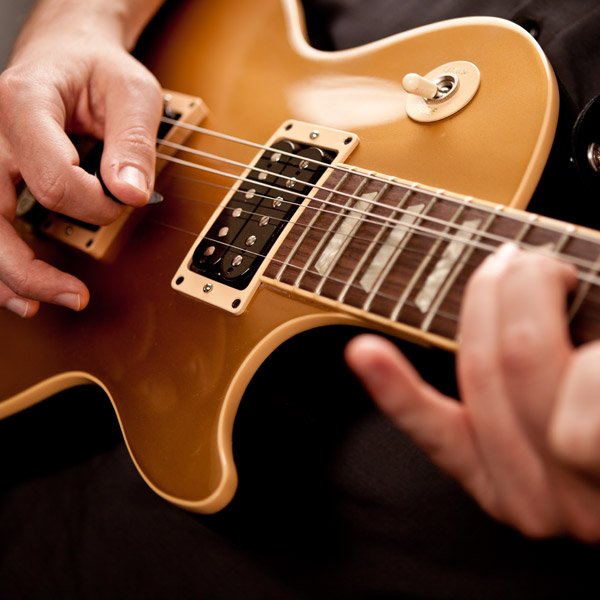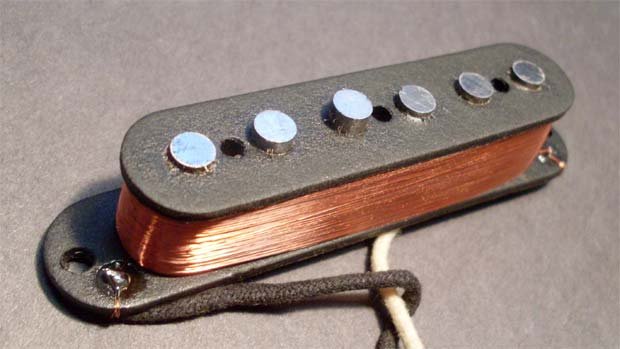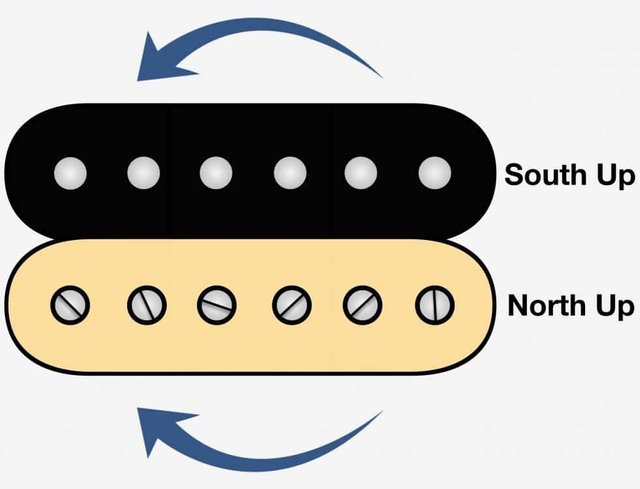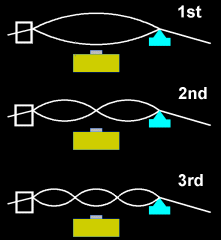How Electric Guitars Work - Pickups
The Science of Electric Guitars
Have you ever wondered how an electric guitar makes music? How an electrical signal from the guitar is converted back into sound? How sometimes guitars have a clean sound but other times they sound crunchy and distorted?
I'm going to be posting several articles about the science that makes electric guitars, amplification, and effects possible.
To begin, I'm going to write about where the guitar's electric signal is first created: the pickups.
What is a pickup?
A pickup is an electrical component that is placed beneath the strings of an electric guitar. When a guitarist plays the guitar and induces vibrations in the strings over the pickups, the pickups convert these vibrations into an electrical signal to be sent through the guitar cable to an amplifier to be converted back into sound.

A guitar pickup is made of a few different components: a magnet, magnetic pole pieces, and a copper coil.
Magnets
The magnet of the pickup is designed to magnetize the string. Each string (made of steel, wound in nickel for the thicker strings) becomes magnetized in the vicinity of the pickups because of steel's ferromagnetic properties. The pole pieces serve to focus the magnet's field onto each string. This is why screws are commonly used as pole pieces on pickups: the pole pieces can be individually lowered or raised, strengthening or weakening the sound of individual strings.

Coils
The coil is the component of the pickup that takes vibrations from steel strings and converts them into electrical signals to be amplified. To understand how this process works, we first need to understand Faraday's Law of Induction. This law states:
a conductor will experience a voltage across and a current through it when a magnetic field moves relative to the conductor.
Now, you can see why the coil in a pickup is able to convert string vibrations into electrical signals- the pole pieces magnetize the strings, so each string has its own magnetic field. When a string is plucked, it begins vibrating and its magnetic field begins to move, which induces a current within the coil. This signal is then sent from the terminals of the pickup to the guitar's output jack through the guitar cable into the amplifier.
Humbuckers
Humbuckers are a type of guitar pickup that are designed to fix the issue of hum which arises from the pickups receiving signals from surrounding power lines and other electronic devices. This issue is resolved by using two coils and sets of pole pieces instead of one. One coil is wound clockwise, and the other is wound counter-clockwise. These two coils are then combined to form the final signal. Because the coils are wound opposite directions, any signals that both of them pick up on will cancel. This addressed the issue of hum, but now we wouldn't be able to hear our guitar! To make the guitar audible we flip the magnet on of the coils upside down, so the guitar signal is inverted again, so the two coils no longer cancel each other out. However, the polarity of the hum is not determined by the direction of the magnets, so the hum still cancels.


Harmonics and Tone
When a string is plucked, it not only vibrates at the fundamental, or main, frequency of the note, but it also vibrates at several higher frequencies higher than the fundamental. These higher frequencies are called harmonics. This is because their frequencies can be determined from the harmonic series: the wavelength of each harmonic is proportional to its index in the harmonic series. For example, if the fundamental note has a frequency of 440 Hz, the second harmonic has half the wavelength and twice the frequency, so it has a frequency of 880 Hz. The third harmonic has one third the original wavelength and three times the frequency, so it has a frequency of 1320 Hz. The unique sound of every instrument is determined by the volume of each of these harmonics.
A pickup will only sense vibration if it is sitting under a point where the above string is vibrating; if it sits beneath a node, which is a point where the string is not vibrating, it will not pick up that frequency. For the first harmonic, it only has nodes at endpoints of the string, so the pickup will always receive that frequency. However, the second harmonic, which has half the wavelength, will have a node halfway along the strings length, so that frequency will not be apparent at that point. Harmonics of the nth degree have a number of nodes equal to n + 1. In reality, you won't have a pickup placed halfway along the length of the guitar, but the presence or lack of certain higher harmonics play an important role in determining the tonal quality of a pickup.

Thanks for reading!
Please follow to see my next article about the workings of an amplifiers.
Sources
Seymour Duncan (Images and Content)
Electronics Tutorials (Electromagnetic Induction)
Fralin Pickups (Images and Content)
Atlantic Quality Design
The Audio Masterclass Newsletter
i appreciate your work friend!
Now my steem blog could change both your life, world and and how you look at the world in a positive way, please follow me, read my blog and comment if you want me to continue my blog